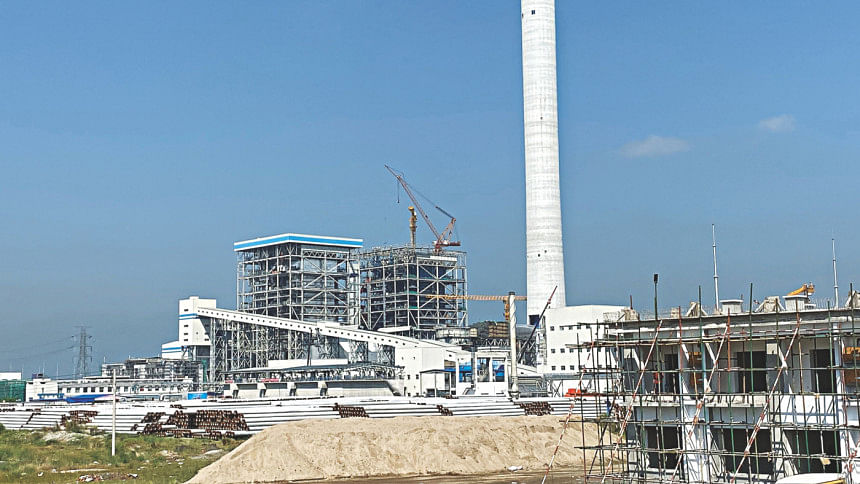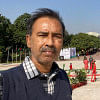A symbol of optimism

As recently as five years ago, Sobhan Ali Howlader, a native of Kalapara upazila of Patuakhali, would barely make ends meet by catching fish at the nearby Andharmanik river.
Now, he feeds his family of six comfortably by exerting himself half as much, and it is all thanks to the construction of the $1.56 billion Payra coal-fired power plant, one of the mega projects of the current Awami League-led government, which jumpstarted a myriad of commercial activities in the economically backward region -- and changed the lives of the natives for the better.

Announced with much fanfare in 2015, construction work for the 1,320 megawatt twin coal-fired power plant, a joint venture between the North-West Power Generation Company Bangladesh Limited and China National Machinery Import and Export Corporation, began in 2016. And sensing the onrush of workers, Howlader quit fishing and set up a tea stall near the site for the power plant, which was a deserted expanse of land then.
Today, there are 700-800 shops and restaurants in the area, all set up by people who previously depended on the physically demanding profession of fishing and farming for their livelihood.
Along with changing the lives of the locals for the better, the power plant has gone on to become a source of strength and comfort for the government: it is the only mega project that is coasting along more or less on schedule, with 9,000 Chinese and Bangladeshi workers toiling away round-the-clock.
As per the original plan, the first of the twin power plants — each of 660 MW generation capacity — was supposed to be ready to supply electricity by April this year. Earlier last month, the boiler of the first unit that would be generating 660 MW electricity was successfully lit up.
“This has given us great confidence,” said Ahmed Kaikaus, senior secretary at the Power division.
But the electricity is not being added to the grid as the 400 kilovolt transmission lines are not ready yet for a longer monsoon this year and some implementation shortcomings of the Power Grid Company of Bangladesh.

Kaikaus though is hopeful that the lines would be ready within the next two months. Once completed, Bangladesh’s power generation capacity will stand at 23,222 MW, up from 22,562 MW at present, that is enough to bring 94 percent of the population under electricity coverage.
“Until then, we will keep on testing and testing,” he said, adding that even if the transmission lines are not fully ready by January next year the power plant will supply electricity to the grid at half-load.
The second unit is scheduled to be ready by the middle of next year too.
The two units would be fed with sub-bituminous coal, a relatively inexpensive and less environmentally harmful variety, brought in from Indonesia and Australia.
But for now, the coal being used is coming from Indonesia, according to Kaikaus.
One challenge, as of now, is the low navigability of the river along which coal is being brought in, due to which one-third the amounts are arriving at a time. But that problem is being addressed.
The power plant is being built using the state-of-the-art ultra-supercritical technology, which has greater efficiency and lower emissions. The power plant has the mechanism to fully capture bottom ash, fly ash, sulphur and nitrogen, all of which are environmental pollutants.
Asked why the government is going headlong towards dirty energy given the growing environmental concerns, Kaikaus said: “There are about 750 new coal-fired power plants which are now being built around the world. Those who are preaching us are still using coal-fired power plant.”
What’s worse is the coal-fired power plants being used in developed countries are mostly based on dated subcritical technology, which cause more pollution and the harmful sulphur and nitrogen are not captured properly.
“But they did not convert their outdated power plants to ultra-supercritical ones. You are asking me to clean up when your own home is dirty,” he said, adding that Bangladesh is a victim of climate change for no fault of its own.
Bangladesh’s emission is 0.4 tonne per capita. In contrast, the US’s s 17 tonne per capita. And India is the fourth highest emitter in the world.
“You have to think how to provide energy to Bangladesh with the least cost,” said Kaikaus, as the sun set into horizon behind him.
Outside, the hustle and bustle became louder, as the workers who had just clocked out for the day were convening towards the restaurants for dinner or evening snacks.
Howlader’s stall was packed to the rafters.
“I have no time to breathe,” he said, while his college-going son Shamim was helping him.
He hopes his stall continues to be this packed for evermore.


 For all latest news, follow The Daily Star's Google News channel.
For all latest news, follow The Daily Star's Google News channel. 



Comments